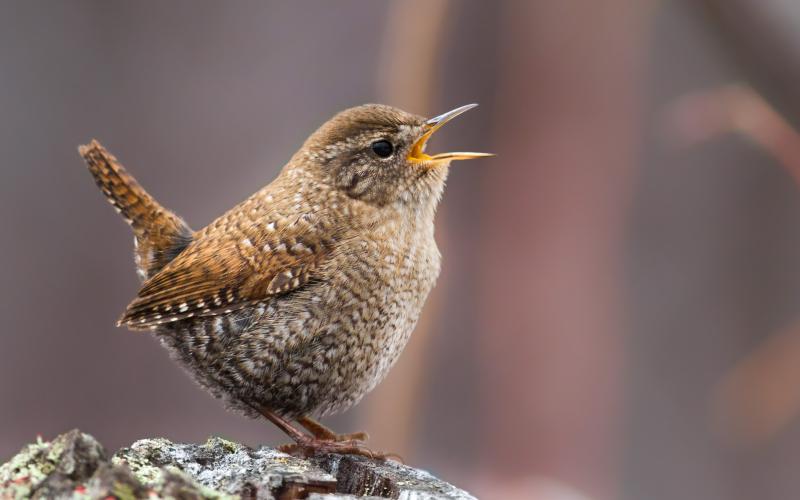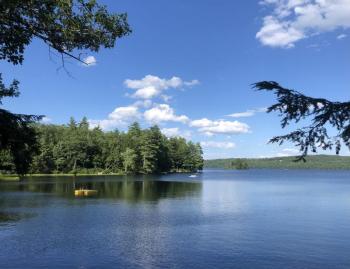On one of the oppressively hot and humid summer days we have been experiencing lately, we had the good fortune to be at the cool, shady camp of brother Andy and sister-in-law Nina on the shore of a classic Maine lake. We had indulged in all the wonderful things such a place afforded: frequent dips in the clear, cool water to keep comfortable; listening to the yodels of loons echoing across the lake in the still morning air; watching newly fledged young bald eagles gliding back to their island nest high in a pine tree to receive the food brought in by their mom or dad.
Most birds have finished their singing this late in the year. A couple of red-eyed vireos doing their sing-song “look-at me, see me, here I am” were about the only birds we heard.
And then from the forested hillside behind the camp erupted the fabulous, loud twists and twirls and trills of what has to be one of the best songsters in the bird world: a winter wren.
If you don’t know the song of the winter wren, you are missing something amazing. In fact, if you listen to a recording of the song of this tiny but talented bird, you may discover you actually have heard it before. It is a song that is hard to ignore.
For us, the song of the winter wren always conveys the sense of a cool, shady, mossy northern forest. That is, essentially, the kind of habitat in which winter wrens usually nest. Sometimes that habitat is in small patches at the tops of mountains, as is the case where they nest in the Highlands of New Jersey and south along the tips of the Appalachians as far south as northern Georgia. But as you move northward, their preferred habitat becomes more widespread. Here in Maine, they occur pretty widely, although the spruce-dominated peninsulas along the coast seem to be favored spots where we hear that beautiful song quite often during April through June, the period of peak singing.
Winter wrens may have a loud song, but they are tiny birds. They often stay in brush piles and tangles in thick, wet woods, sometimes near where a tree has tipped over, its upended roots making a perfect spot where they can search for food or hide a nest. Like many wrens, they have a habit of cocking their short tail up and bopping their bodies up and down when agitated.
Until recently, taxonomists considered the single wren species of Europe and Asia and the winter wren of North America as one species. Now we know that what we thought was one species is really three: the wren of Europe and Asia known today as the Eurasian wren, “our” winter wren whose range extends northwestward to northeastern British Columbia, and the Pacific wren whose range extends from Alaska south to California and Arizona. The three relatively newly described species have noticeably different songs, although they look very similar.
We were delighted to hear a winter wren belting out its song during our visit to the camp—doubly so because we couldn’t find any indication that we had ever found one there at the lake, at least in recent years. On a hot summer day, it was refreshing to have a winter wren serenade us from the cool depths of the mossy forest.
Jeffrey V. Wells, Ph.D., is a Fellow of the Cornell Lab of Ornithology and Vice President of Boreal Conservation for National Audubon. Dr. Wells is one of the nation's leading bird experts and conservation biologists. He is a coauthor of the seminal “Birds of Maine” book and author of the “Birder’s Conservation Handbook.” His grandfather, the late John Chase, was a columnist for the Boothbay Register for many years. Allison Childs Wells, formerly of the Cornell Lab of Ornithology, is a senior director at the Natural Resources Council of Maine, a nonprofit membership organization working statewide to protect the nature of Maine. Both are widely published natural history writers and are the authors of the popular books, “Maine’s Favorite Birds” (Tilbury House) and “Birds of Aruba, Bonaire, and Curaçao: A Site and Field Guide,” (Cornell University Press).

































.png)
.png)
